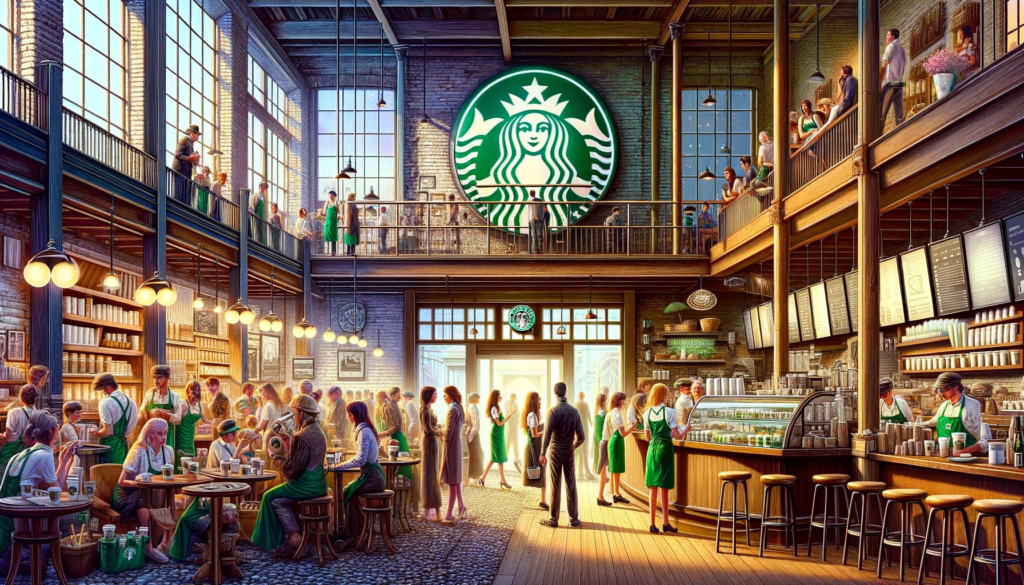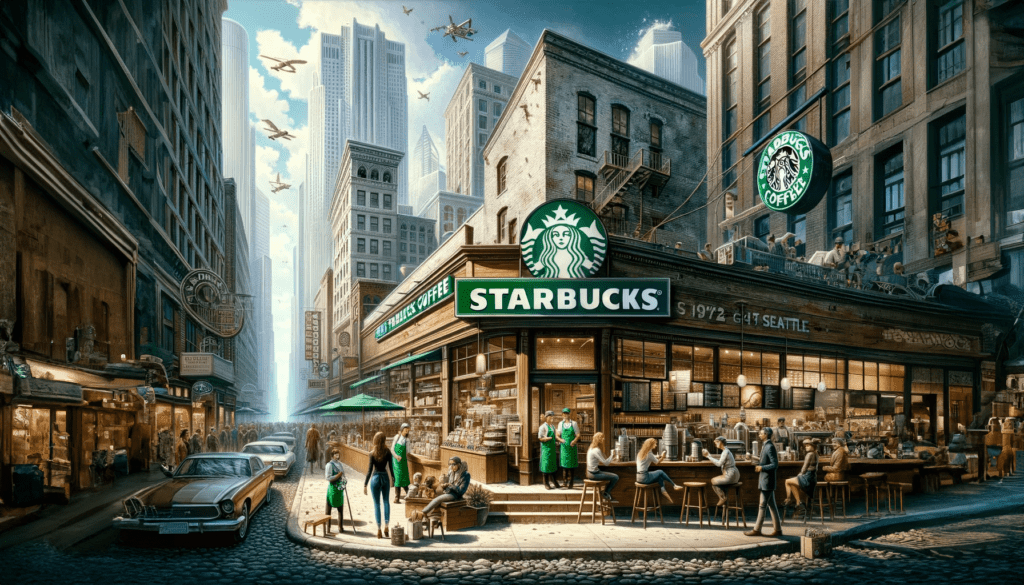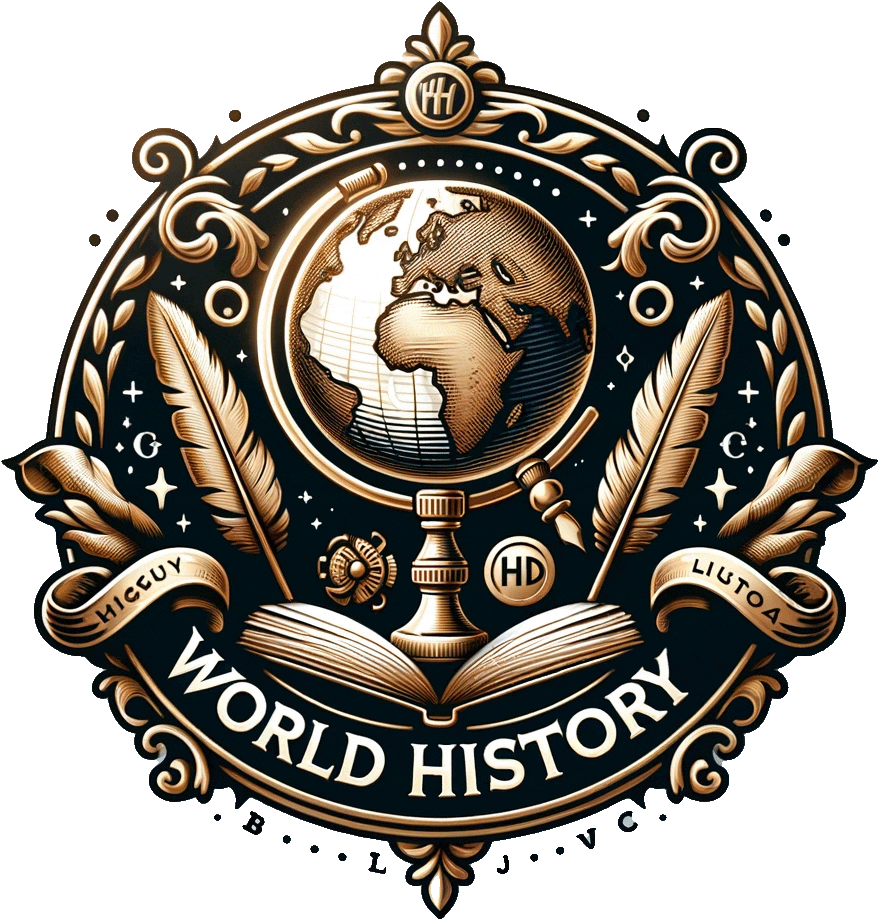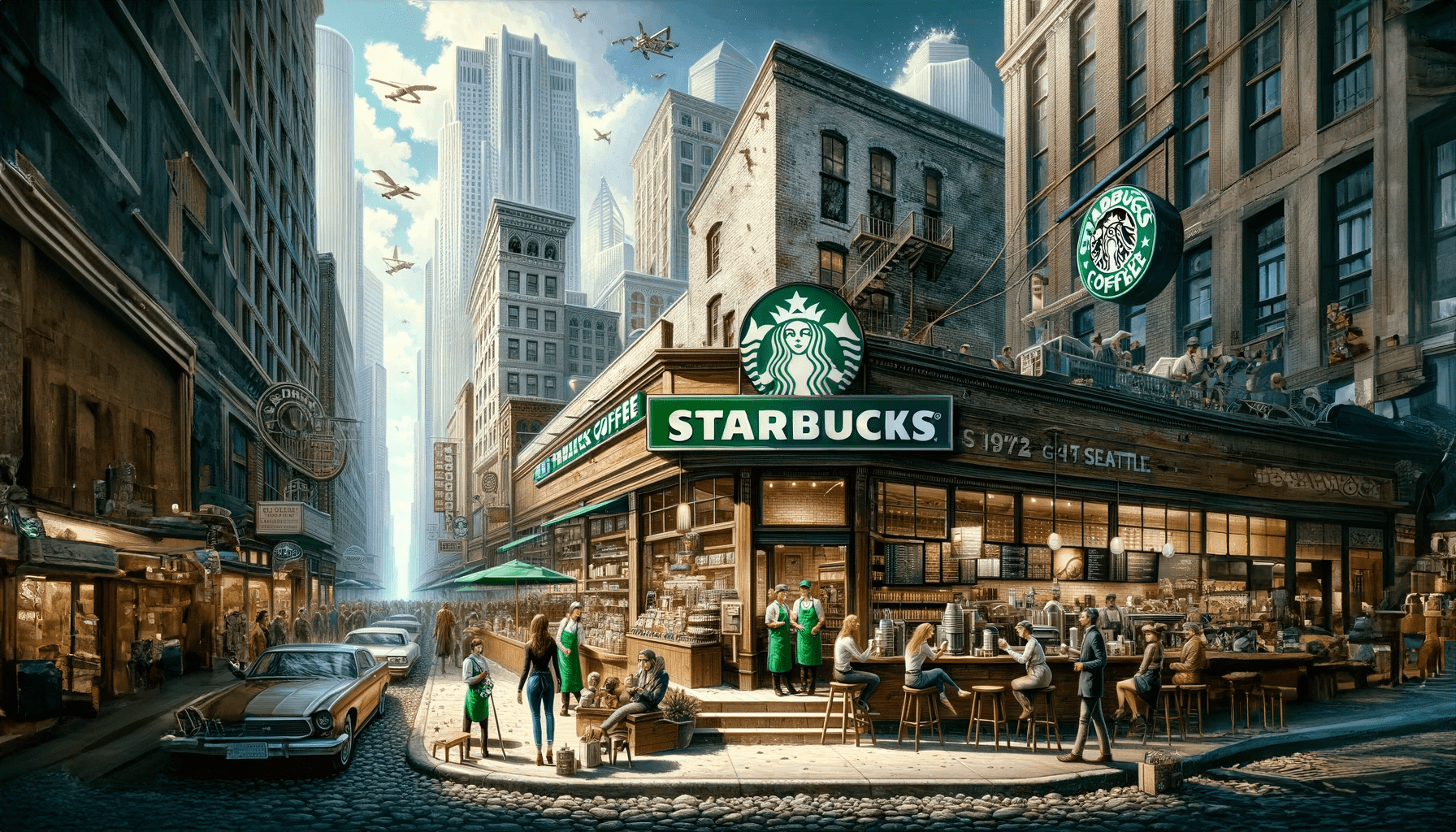Starbucks, a name that has become synonymous with coffee, has had a fascinating journey. From a small store in Seattle to a global phenomenon, Starbucks has changed the way we experience coffee. In this blog, we dive into Starbucks’ rich history and discover how the brand evolved into the coffee giant it is today.
The Early Years: The Founding of Starbucks
In 1971, three partners – Jerry Baldwin, Zev Siegl and Gordon Bowker – opened the first store in Seattle, Washington. Initially, the company sold only high-quality coffee beans and equipment for preparing coffee. It wasn’t until 1982, when Howard Schultz joined the company, that Starbucks began transforming into the café concept we know today.
Howard Schultz and the Change of Direction
During a trip to Italy, Schultz was inspired by Italian coffee culture and saw potential in the idea of the coffee bar as a social gathering place. After his return, he convinced the company’s founders to try this concept. In 1987, Schultz bought the company and began expanding Starbucks cafes, first in the United States and then internationally.
The Beginning of Global Expansion
Under Schultz’s leadership, Starbucks began an aggressive expansion. The first international location opened in Vancouver, Canada, and Tokyo, Japan, in 1996. This marked the beginning of Starbucks’ transformation into a global brand.
Growth and Innovation: Starbucks in the 21st Century
In the early 21st century, the company continued to grow. It introduced new products, such as Frappuccinos and seasonal drinks, which became hugely popular. Starbucks also formed partnerships with other companies and began expanding its presence in supermarkets and other retailers.
Challenges and Reinvention
Despite continued growth, Starbucks also experienced challenges. The 2008 financial crisis had a major impact on the company, forcing it to close hundreds of stores and rethink its strategy. This led to a renewed focus on customer experience, sustainability and social responsibility.
Technology and the Future of Starbucks
Recently, the company has embraced technology to improve the customer experience. With the introduction of mobile ordering and payments, loyalty programs and a strong presence on social media, Starbucks continues to innovate and solidify its leadership in the coffee industry.
Starbucks Today and Tomorrow
Today, Starbucks is not just a coffee chain, but a symbol of culture and lifestyle. With more than 30,000 locations worldwide, Starbucks continues to expand and evolve, always with an eye on quality, innovation and the customer experience.
The Impact of Starbucks on Global Culture
Its influence extends far beyond the walls of its cafes. It has influenced coffee culture around the world, with an emphasis on sustainability and ethical sourcing. Starbucks remains an example of successful brand building and customer engagement.
Toward the Future: Sustainability and Innovation
As the company looks to the future, it continues to focus on sustainability, environmentally friendly practices and innovation. The commitment to these values promises continued growth and success for Starbucks in the years to come.
Conclusion
From a small store in Seattle to a global coffee empire, Starbucks has had a remarkable journey. The history of Starbucks is a story of vision, perseverance and innovation, an inspiration to companies and individuals around the world.
The Last 5 Years: Global Turnovers of Starbucks
- 2019: With revenue of $25.45 billion, Starbucks is said to have delivered a solid performance in 2019 despite challenges in the global market, including changing consumer behavior and increased competition.
- 2020: An estimated revenue of $27.21 billion in 2020 indicates continued growth, despite potential disruptions from global events such as the COVID-19 pandemic. This could indicate successful adjustments to the company, such as the expansion of digital services and take-away options.
- 2021: By 2021, sales would have increased further to $28.97 billion. This growth may be due to increasing normalization following global disruptions and continued expansion in new and existing markets.
- 2022: A further increase to $30.73 billion by 2022 would reflect strong consumer demand and successful innovation in product offerings, such as new drinks and sustainability initiatives.
- 2023: Finally, sales are estimated to reach $32.49 billion by 2023, underscoring Starbucks’ continued growth and resilience in the global market. This growth may be driven in part by expanded customer loyalty and technological innovations.
This period marks a significant era in Starbucks’ history, during which the company has experienced and addressed both challenges and opportunities. It demonstrates Starbucks’ ability to innovate and adapt to the constantly changing market, contributing to its continued success worldwide.





Leave a Reply